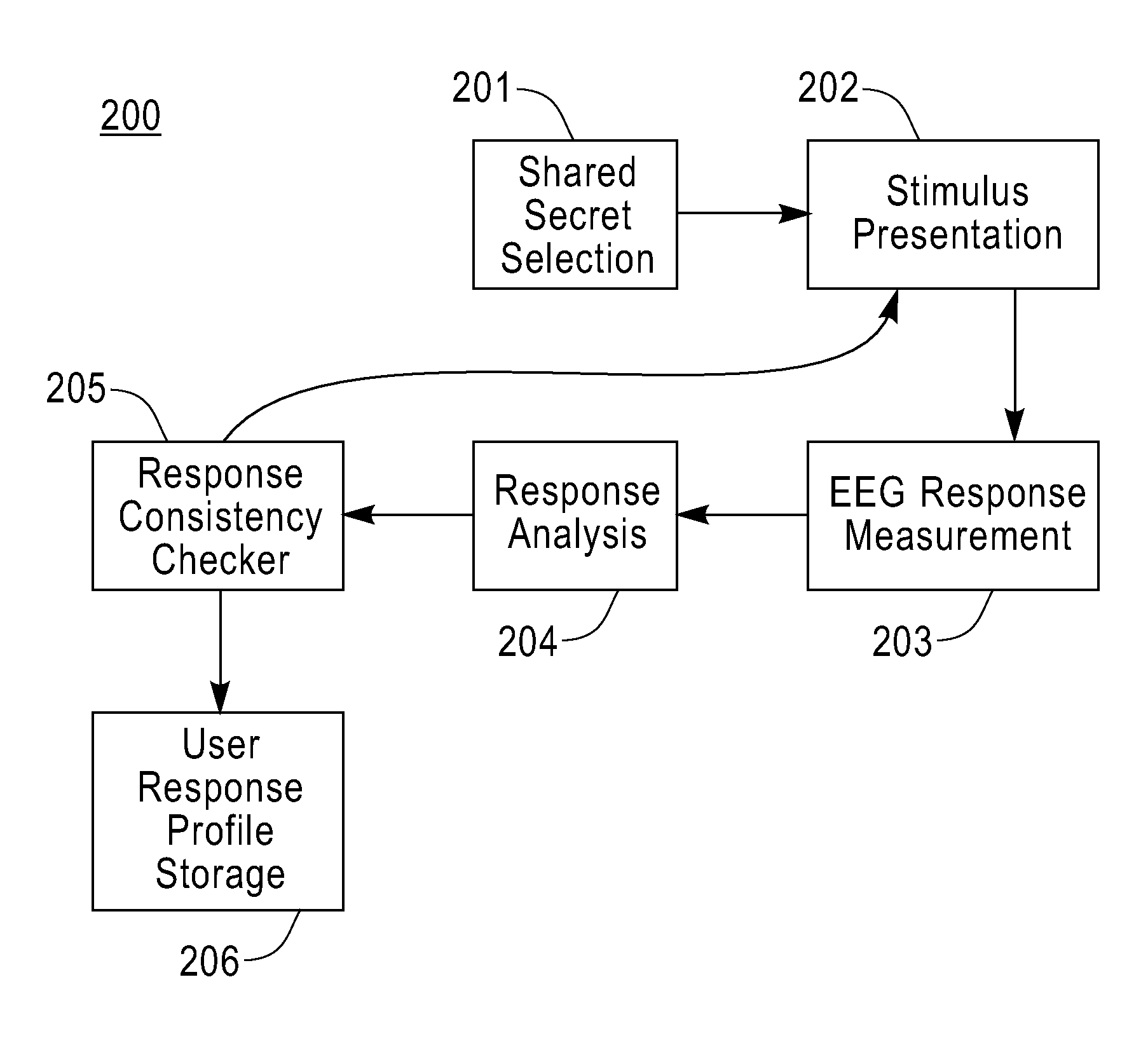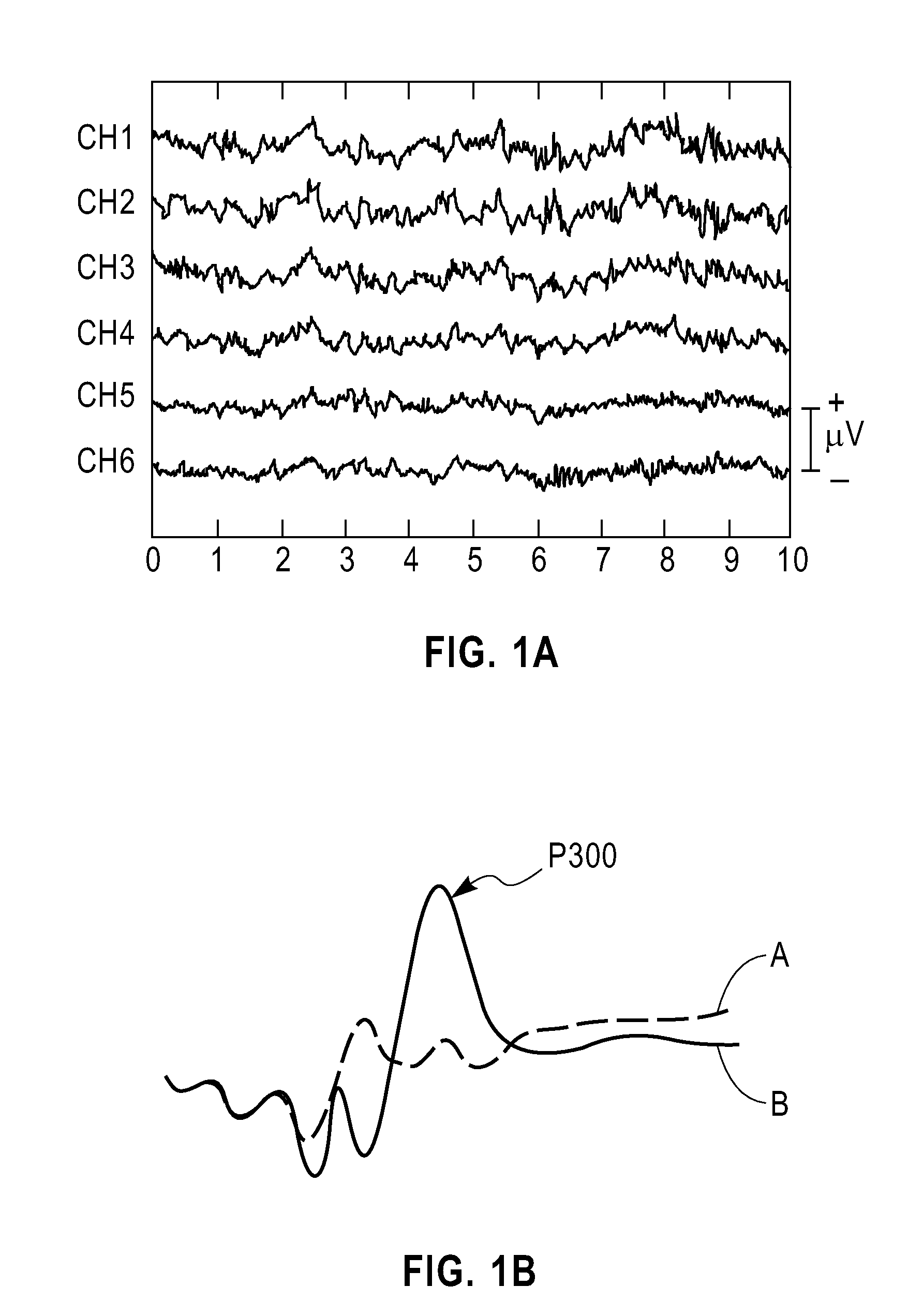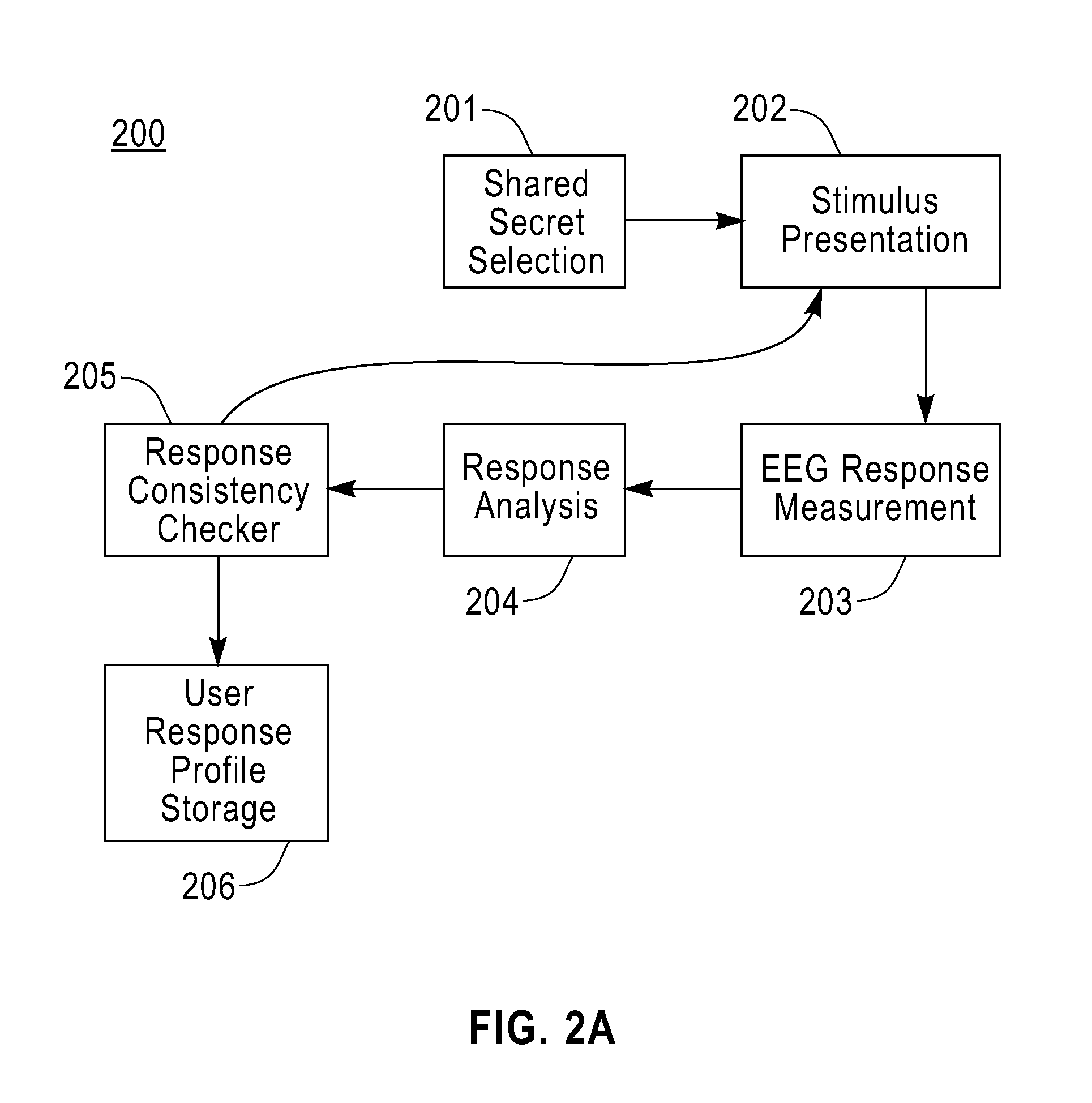User authentication via evoked potential in electroencephalographic signals
a technology of electroencephalographic signal and user authentication, applied in the field of user authentication techniques, can solve the problems of knowledge-based authentication being prone to imposter attacks, possession-based authentication (e.g., door key or some other identifying device), and biometric-based authentication (e.g., fingerprint) being prone to fraud
- Summary
- Abstract
- Description
- Claims
- Application Information
AI Technical Summary
Benefits of technology
Problems solved by technology
Method used
Image
Examples
Embodiment Construction
[0020]Illustrative embodiments of the invention will be described below in the context of systems that determine the authenticity of a user by extracting their knowledge encoded in the electroencephalographic (EEG) signal. That is, principles of the invention improve the user authentication process by making use of the so-called Brain-Computer-Interface (BCI) which is established through the EEG signal. By authenticating the user via the EEG signal using perceptory knowledge, such as visual (pictorial) or auditory knowledge, that may not necessarily be expressed in a verbal form (or may be hard to communicate in general), an eavesdropper is prevented from gaining the essential secret information.
[0021]The term “perceptory” as used herein is generally defined as something that is “perceived” or “perceivable” by one or more of the human senses (e.g., vision, hearing, etc.).
[0022]Before describing illustrative embodiments of the invention, we provide a brief description of the neurosci...
PUM
 Login to View More
Login to View More Abstract
Description
Claims
Application Information
 Login to View More
Login to View More - R&D
- Intellectual Property
- Life Sciences
- Materials
- Tech Scout
- Unparalleled Data Quality
- Higher Quality Content
- 60% Fewer Hallucinations
Browse by: Latest US Patents, China's latest patents, Technical Efficacy Thesaurus, Application Domain, Technology Topic, Popular Technical Reports.
© 2025 PatSnap. All rights reserved.Legal|Privacy policy|Modern Slavery Act Transparency Statement|Sitemap|About US| Contact US: help@patsnap.com



